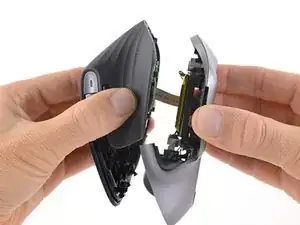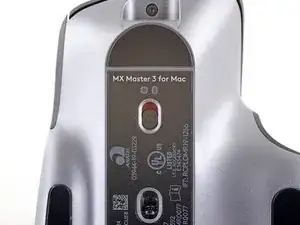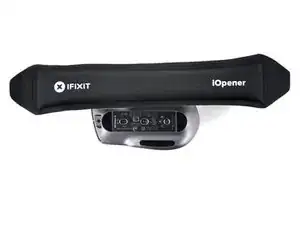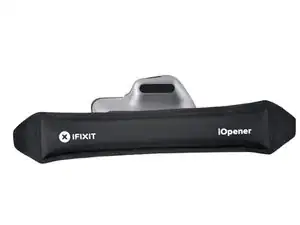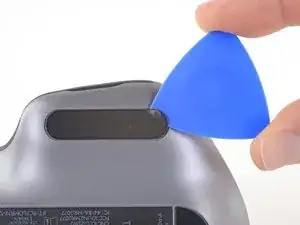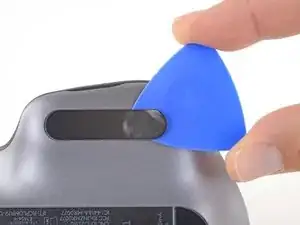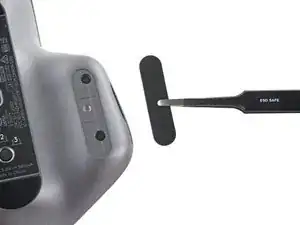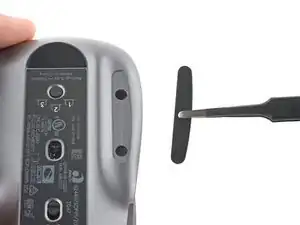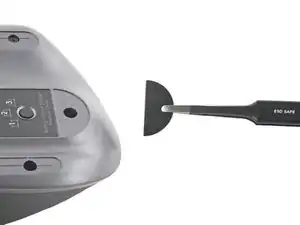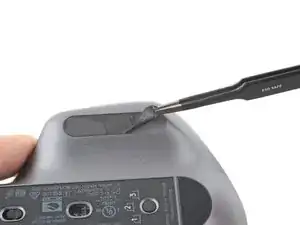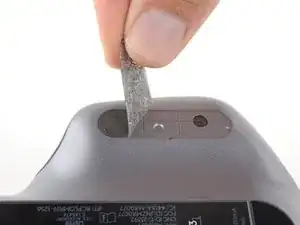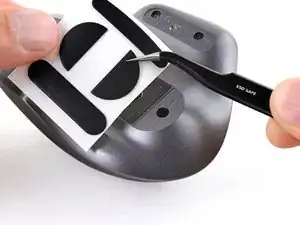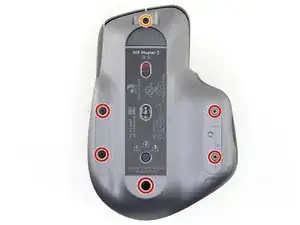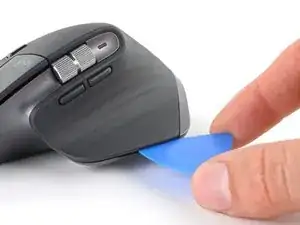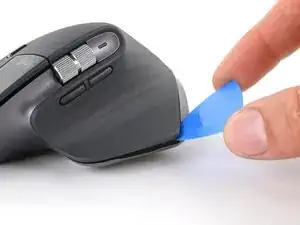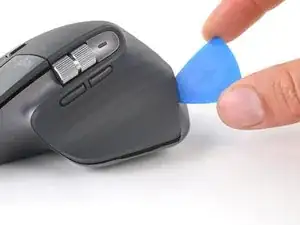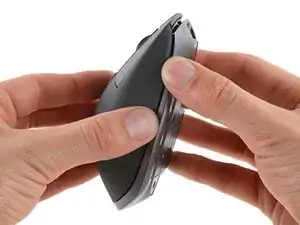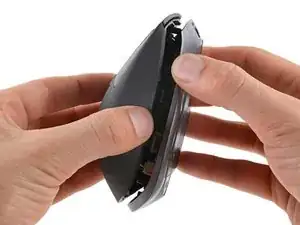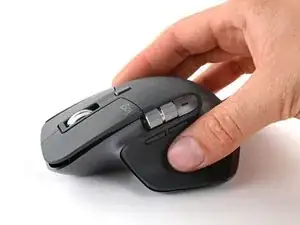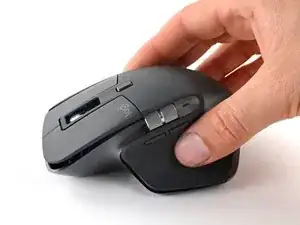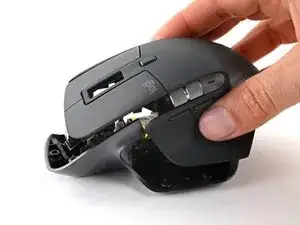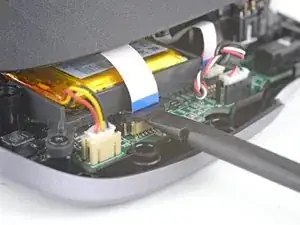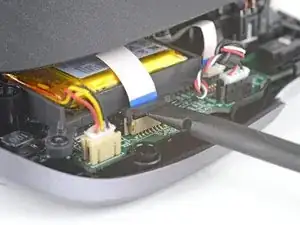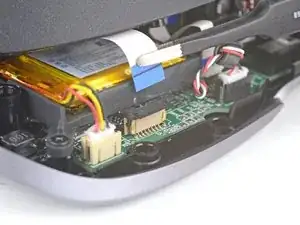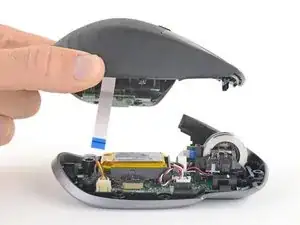Introduction
Use this guide to open your Logitech MX Master 3 mouse.
Open your mouse to clean its internals, troubleshoot mechanical problems, or replace a part.
Tools
Parts
-
-
Flip the mouse's power switch into the OFF position, unplug any cables, and flip it over so the feet are facing up.
-
Heat an iOpener and apply it to each of the mouse feet for about one minute each.
-
-
-
Slide an opening pick under an edge of the left mouse foot.
-
Slide your pick under the foot to separate its adhesive until you can grab it with your fingers.
-
Peel up and remove the left mouse foot.
-
-
-
Slide the flat end of a spudger under an edge of the adhesive. If the adhesive seems stuck, you may need to heat the adhesive further.
-
Use a pair of tweezers or a spudger to remove any large chunks of leftover adhesive.
-
Thoroughly clean the bottom of the mouse with isopropyl alcohol and a lint-free of microfiber cloth. Allow the surface to dry completely.
-
Peel your new mouse feet away from their adhesive liners and press them firmly into place.
-
-
-
Use a Phillips screwdriver to remove the five 4.3 mm-long screws securing the lower half of the lower case.
-
Use a T5 Torx driver to remove the one 4.2 mm‑long screw securing the upper half of the lower case.
-
-
-
Insert your opening pick into the seam between the thumb rest and the lower case.
-
Slide your pick right, towards the rear of the upper shell and pry upward to release the left clips.
-
-
-
Gently pry the upper shell and lower case apart to release the clips on the right side of the mouse.
-
-
-
Lay your mouse down onto your work surface, making sure none of the clips re-engage.
-
Grasp the upper shell and partially lift up the right edge.
-
Pull the upper shell up and back to release the final clip and separate the upper shell from the lower case.
-
-
-
Use the flat end of a spudger to gently lift up the black sliding lock on the interconnect cable socket.
-
Slide the cable straight out of its socket on the motherboard.
-
To reassemble your device, follow these instructions in reverse order.
Repair didn’t go as planned? Check out our Answers community for troubleshooting help.
6 comments
Es vergonzoso que estos ratones tan caros se estropeen con tanta facilidad.
Al Master MX y Master MX2 se les estropea el botón del click izquierdo muy pronto.
Y al Master MX 3 se le atasca la rueda, y lo tengo sólo un año y lo cuido y limpio.
Lo he abierto para desatascar la rueda y lamentablemente no se puede desmontar del todo, por dentro hay pelusilla que no se puede sacar. No sé por qué no ponen la rueda desmontable.
De todos modos, por si a alguien le interesa, le he echado aceite lubricante a la rueda y de momento parece que ha mejorado bastante.
Más exactamente le he echado aceite de silicona, que no estropea los plásticos. Y lo he puesto por la parte interior, por donde parece que tiene como unos engranajes.
Creo que uno de los problemas que tiene es que el muelle del click de la rueda es demasiado débil y al intentar hacerla girar en vez de girar lo que hace es apretar el muelle. Necesito encontrar un muelle compatible pero más fuerte para sustituirlo.
skan -
Al igual que a ti el botón izquiero del MX master 3 de estropeo, pero encontré un video de you tube para repararloa bajo costo y con botones silenciosos, ha quedado muy bien https://youtu.be/nGChuA9hh4I
Tengo el mimso problema, la rueda atascada con pelusa. lo desarmé, pero no veo que se pueda desarmar la rueda más allá para llegar a la pelusa y quitarla. una pena
